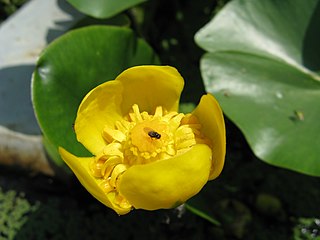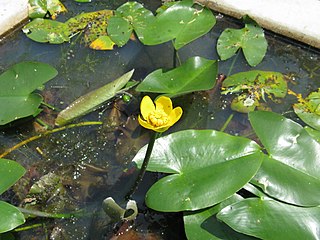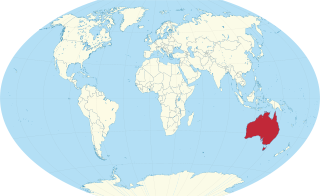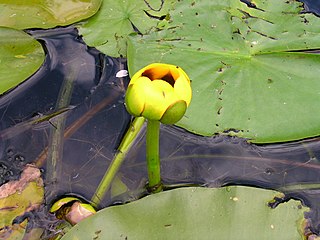
Nuphar is a genus of aquatic plants in the family Nymphaeaceae, with a temperate to subarctic Northern Hemisphere distribution. Common names include water-lily, pond-lily, alligator-bonnet or bonnet lily, and spatterdock.

Potamogeton is a genus of aquatic, mostly freshwater, plants of the family Potamogetonaceae. Most are known by the common name pondweed, although many unrelated plants may be called pondweed, such as Canadian pondweed. The genus name means "river neighbor", originating from the Greek potamos (river) and geiton (neighbor).

Nuphar lutea, the yellow water-lily, brandy-bottle, or spadderdock, is an aquatic plant of the family Nymphaeaceae, native to northern temperate and some subtropical regions of Europe, northwest Africa, and western Asia. This species was used as a food source and in medicinal practices from prehistoric times with potential research and medical applications going forward.

Potamogeton coloratus, the fen pondweed, is an aquatic plant in the genus Potamogeton. It is found in shallow peaty calcareous lakes, ponds and ditches, commonly associated with lowland fens.

Potamogeton lucens, or shining pondweed, is an aquatic perennial plant native to Eurasia and North Africa. It grows in relatively deep, still or slow-flowing, calcareous freshwater habitats.

Nuphar pumila, the least water-lily or small yellow pond-lily, is an aquatic perennial plant in the Nymphaeaceae family. It is also known as the dwarf water lily since it looks like a smaller Nuphar lutea. while Nuphar pumila has a star-shaped, or lobed form of the stigma disc and glabrous leaf undersides, Nuphar lutea has a round stigma disc and the undersides of its leaves are occasionally fine-haired on the midribs. Its flowers bloom from July to August and are typically pollinated by flies.

Potamogeton gramineus is a species of aquatic plant known by the common name various-leaved pondweed, variableleaf pondweed, grass-leaved pondweed or grassy pondweed, native to the northern hemisphere where it grows in shallow, clean water.

Nuphar japonica, known as East Asian yellow water-lily, is an aquatic plant species in the genus Nuphar found in Japan and the Korean Peninsula. It is endangered in Russia. The species was not accepted by The Plant List as of November 2013, which regarded it as an "unresolved name".

Nuphar subintegerrima is a species of rhizomatous aquatic plant endemic to Japan.

Nymphaea jacobsii is a species of waterlily endemic to Queensland, Australia.

Barclaya longifolia is a species of perennial aquatic plant native to the region of Indo-China to Northwest Peninsular Malaysia.
Nuphar ulvacea is a species of rhizomatous aquatic plant native to the US-American states Alabama and Florida.
Nuphar ozarkana is a species of aquatic plant native to the US-American states Arkansas, Missouri, and Oklahoma.

Nuphar saikokuensis is a species of rhizomatous aquatic plant endemic to Japan.
Nuphar orbiculata is a species of rhizomatous aquatic plant native to the US-American states Alabama, Florida, and Georgia.

Nuphar oguraensis is a species of rhizomatous aquatic plant endemic to Japan.

Nuphar × saijoensis is a species of rhizomatous aquatic plant endemic to Japan. It is a natural hybrid of Nuphar japonica and Nuphar pumila, or Nuphar japonica and Nuphar pumila subsp. oguraensis.

Nuphar × rubrodisca is a species of rhizomatous aquatic plant native to Canada and the USA. It is a natural hybrid of Nuphar variegata and Nuphar microphylla.

Nuphar × fluminalis is a species of rhizomatous aquatic plant endemic to Japan. It is a natural hybrid of Nuphar japonica and Nuphar submersa.

Nuphar sect. Nuphar is a section within the genus Nuphar native to Eurasia, in addition to a single north American species Nuphar microphylla.














